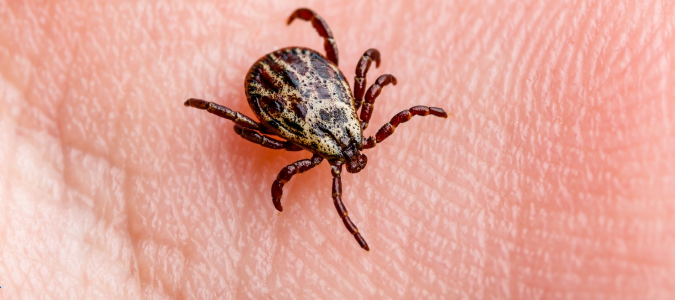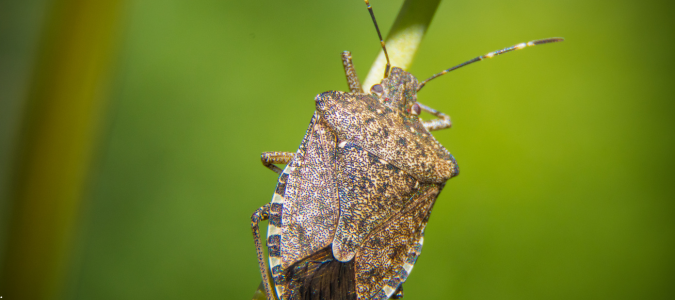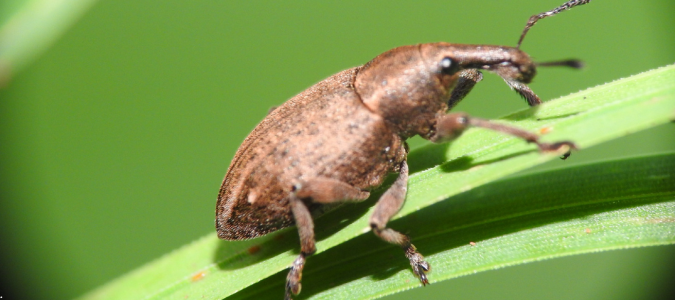Ticks are creepy-crawling insects that no one wants to encounter, especially since they are parasitic pests that carry diseases. The more you understand about tick behavior, the easier it will be to avoid them.
Do Ticks Fly?
Ticks do not fly and do not have wings. Instead, these parasitic insects latch onto animals and humans by crawling onto them. The most common way to encounter a tick is when you’re walking through tall grass or bushes.
The process of a tick attaching to a host is called “questing.” They patiently hide out in a bush or tall grass until a potential host walks by, and then they crawl onto them. They then use their hosts for their blood meals.
While ticks do not fly, researchers have discovered another unique way that they hoist themselves onto a new host. Instead of crawling, they use static energy to launch themselves into the air. They can shoot themselves up to several centimeters high, which is often enough height for them to attach to a new host.
How to Prevent a Tick From Crawling on You
Ticks are not only an annoyance to their host, but they can also carry severe diseases, such as Lyme disease. It’s important to take measures to protect yourself against ticks while you’re outside.
For example, wearing long and protective layers of clothing is a great place to start. Since it’s common for ticks to hide in tall grass and bushes, it’s important to cover your skin as you walk through areas like this.
Wearing long pants, long sleeves and closed-toed shoes can greatly reduce the chances of a tick attaching to you. To be even more careful, you can tuck your pants into your socks so that your ankles are not exposed.
Next, apply a tick repellent before you spend time outdoors. If you have a dog, look for a tick repellent made for pets as well.
After you spend time outside, check your body for ticks. You should also inspect your children and pets for ticks, and pay special attention to behind the knees, around the ears and in the underarms.
Make Your Home Less Hospitable to Ticks
Finally, creating a tick-free yard can help you enjoy nature without worrying about ticks. To deter these pesky creatures, keep your lawn trimmed and well-maintained. Regularly mow your grass, trim your bushes and remove leaf litter, which is another place ticks like to hide. Ticks are attracted to overgrown areas because they provide places to hide. The more you can eliminate those places, the less likely they are to infest your yard.
You can still enjoy the great outdoors and be vigilant against ticks. Contact a local pest control specialist if you suspect ticks are on your property.
Additionally, ticks are commonly mistaken for fleas. The more you learn about each pest, such as understanding the life cycle of a flea, the easier it will be to tell them apart and know which one you’re dealing with on your property.
Can You Feel if a Tick is On You?
Ticks are tiny and stealthy pests, and it’s unlikely that you’ll even feel anything when a tick is on you. You most likely won’t even feel when a tick bites you.
Ticks can go undetected on their hosts because their bites are painless. When they bite their host, they secrete a numbing substance over the bite area. This allows them to bite and latch onto the skin without the host noticing. They can even feed on their host’s blood for several hours or days undetected.
The other reason you don’t feel ticks is because of their size. Adult ticks are around the size of an apple seed, which means they can crawl around on your skin without you feeling anything.
Since ticks are nearly impossible to detect through feeling, inspecting your body after spending time outside is crucial. It’s especially important if you spend time in tall grass, bushes, leaf litter or other overgrown areas of your property where ticks hide.
Check your entire body for ticks and remove them as you find them. Next, contact a pest control service. An expert can treat the ticks on your property and put preventative measures in place to deter them from returning.
Tips For Removing Ticks From Your Home
It’s important to deal with ticks as quickly as possible to prevent an even bigger annoyance, and working with a pest control professional is the best way to do so. However, you can also try some at-home methods to kick ticks out of your home.
For example, regularly vacuuming your rugs, carpets and furniture can kill ticks. You should pay special attention to areas where your pets like to hang out. After vacuuming, dispose of the vacuum bag.
Next, wash your linens, clothing and pet bedding in hot water to kill off any ticks that have attached to your fabrics.
Ticks are notorious for hiding out in small spaces, so keeping a clean home can go a long way in preventing a problem. Clean out small crevices and maintain a tidy space to reduce potential tick-hiding spots.
If you have pets, check them for ticks regularly and use tick treatments, such as tick collars, oral medications or topical solutions.
Ticks are not the only pests that hide in furniture and small spaces. Bed bugs, which are often mistaken for ticks, do the same thing. The more you know about bed bug behaviors, such as what to do about bed bugs in your furniture, the better off you’ll be.
If you suspect that you have a pest infestation in your home, reach out to a pest control provider.
What Can Be Mistaken For a Tick?
Ticks are tiny pests that are easy to mistake with other bugs. It’s helpful for homeowners to learn about the appearance and behavior of ticks versus the other insects they’re commonly mistaken for so that identification is easier.
Stink Bugs
Ticks have small, flat bodies that are shaped like an oval. They have eight legs and can vary in color from black, brown and grayish-white. Ticks are easily mistaken for stink bugs, which also have flat bodies. However, stink bugs are larger than ticks, and their bodies can be brown, green or gray.
The other big difference between stink bugs and ticks is that stink bugs are not parasitic. They are more likely to be found around windows, lights and plants.
Lice
Next, it’s common to mistake ticks for lice. However, lice have longer bodies than ticks and move more quickly. Lice only attach to areas with dense hair, whereas ticks attach to bare skin.
Fleas
You may also confuse a tick for a flea, as both pests are extremely small. The main difference is that fleas are smaller and more slender than ticks, and they are known for jumping on their hosts. Many homeowners find it helpful to learn more about the appearance of popular flea species, such as what cat fleas look like.
Weevils
Finally, you may mix up ticks and weevils or other beetles. While they look similar, beetles have a more pronounced head than ticks. They also have six legs instead of eight, and their legs are more visible than tick legs. Beetles are much faster than ticks, and they feed on food rather than blood.
Aside from appearance, the best way to distinguish a tick from another pest is by how it moves. Ticks slowly crawl onto their hosts instead of flying or jumping.
If you suspect that there are unwanted insects in your home, contact a local pest control specialist.
Keep Ticks Away
Whether they are outside on your property or in your home, ticks are not desirable guests. They are parasitic and can carry diseases, so it’s important to avoid them.
If you suspect that there are ticks on your property or in your home, contact a pest control service.
ABC Can Give You Peace of Mind
Finding even a single tick on your property can be alarming. For peace of mind when it comes to ticks, contact ABC Home & Commercial Services. Our pest control professionals will create a custom tick treatment plan, so you can feel at ease.







